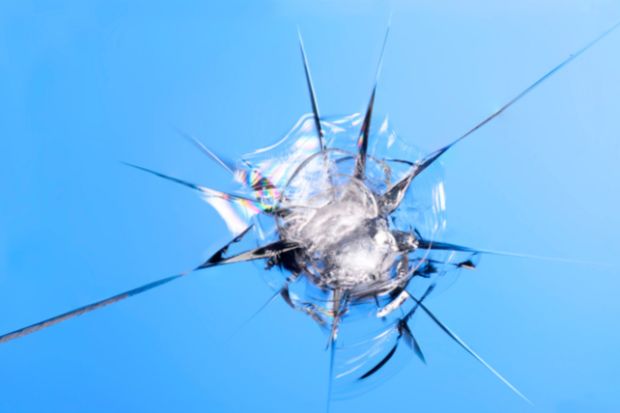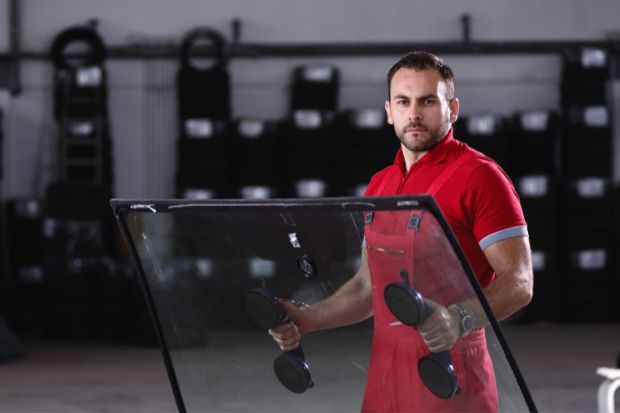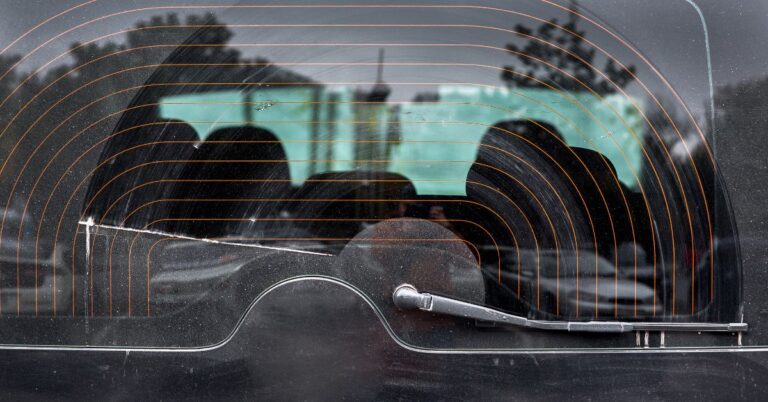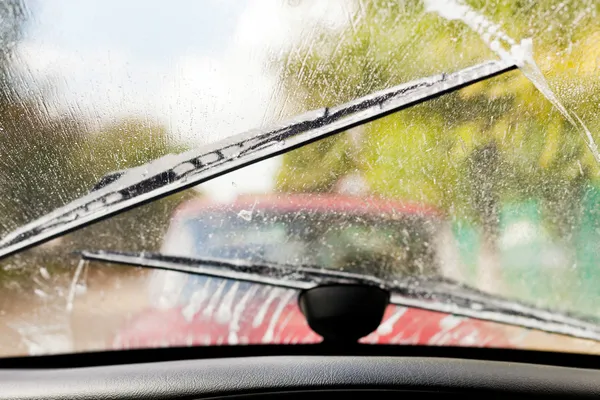Windshield recycling and Auto Glass Facts It is common today...
Things to Know Before You Chip Your Windshield

When you drive, you’re going to hit things. Unfortunately, it’s just a matter of when and not if. Chips, pits, and cracks are all waiting to happen to your windshield sooner or later. Even the most cautious drivers will eventually see the inside of a repair shop due to an unfortunate crack in their windshield.
Fortunately, there are many ways to prevent that crack from getting any worse than it needs to be. Even so, chips and cracks can end up being pretty expensive once everything is said and done. If you don’t want your car insurance premiums to skyrocket because of a simple accident that left your car looking as though it has chicken pox, here are a few things you should know about repairing your windshield before things get out of hand:
Check your insurance coverage
If your insurance company will cover the cost of your windshield repair, you’re in luck. However, that doesn’t mean that you shouldn’t look at your coverage limits first. Coverage limits will vary from one insurance company to the next, but you should know your limits before you need them. A windshield repair is typically a fraction of the cost of a windshield replacement, so you may be able to get away with only having coverage for a repair. Your agent can advise you on what you’re covered for and help you decide on the best course of action for your specific situation. Remember, though, that insurance coverage is always subject to certain limitations. Before you spend any money on a windshield repair, make sure you understand your scope.
Know your repair options
First, find out what type of damage you have. There are two types of windshield damage: “through and through” and “edge damage”. The first type of damage goes all the way through the windshield and can be fixed by filling in the crack with resin. The second type of damage is only on the edge of the glass and can be fixed by placing a small piece of glass over the crack. If your damage is “through and through,” you’ll have to get a new windshield. If you have “edge damage,” you can either get a new windshield or a “band-aid” fix by filling in the crack with resin. The resin-based repair is cheaper than replacing the windshield, but it’s only a temporary solution. It’s a good idea to get your windshield replaced as soon as possible.
Windshield repair or replacement?
The short answer to this question is that you should always opt for a replacement over a repair if your windshield is more than 50% damaged. This is because even the best repair job won’t last as long as a new windshield. If you don’t have the money to replace your windshield, though, you can get it repaired. Most windshield repair technicians can repair the damage in your windshield, leaving the rest of it intact. There are two types of glass that are used in windshields: tempered glass and non-tempered glass. If your windshield has tempered glass, it will be thicker and more resistant to damage. A non-tempered windshield is more likely to get damaged because it’s thinner and softer. If you have a non-tempered windshield, you may have to get a new windshield instead of getting it repaired.
Be clear about your warranty expectations
If you’re getting your windshield replaced, the auto glass shop will give you a warranty on the work they’ve done. This means that if your windshield gets damaged again within a specific time frame (usually 12 months), the shop will fix it for free. The same goes for repair jobs. If your windshield gets damaged again soon after you’ve had it repaired, you may be able to get it fixed for free again. It’s a good idea to clarify with the shop what their warranty guidelines are before you make any decisions. In most states, the law requires auto glass shops to give you a written warranty on their work. Make sure you read the warranty and understand what it covers. If you have any questions, don’t hesitate to ask.
Don’t be swayed by upselling
No matter what you’re getting repaired at the shop, someone will inevitably try to upsell you. They might try to sell you a better type of glass or a more expensive warranty. The only thing you need to worry about is whether or not you can afford the repairs you came in for. The rest is up to you. If you need a specific type of glass for structural reasons, get it. If you don’t have the money for any extras, then don’t get them. You’re the one paying for the repairs, so you need to make the decisions that are right for you.
Get a second opinion
Sometimes you might want to get a second opinion on the type of repair that’s recommended. This is especially true if you’re getting a repair done. If you’re getting a new windshield, you’ll have to decide between an aftermarket windshield and an OEM windshield. An aftermarket windshield is cheaper and can be installed in hours. However, it may not fit as well as an OEM (original equipment manufacturer) windshield. A second opinion can help you weigh the pros and cons of each option and decide what’s best for you.
Take care of the rest of your car
If you’ve had to make any repairs to your windshield, you may want to take a step back and look at the rest of your car. If you’ve been driving around with a damaged windshield, you’re probably scratching up the paint on your hood and bumper. If you’ve been using a car cover, you’re probably covering up visual damage that you don’t even know is there. Now is a great time to take a look at the rest of your car and make sure you’re not missing anything. If you’re hitting things with your hood, you may want to consider having it repainted or replacing it. You may also want to look at the rest of your car for any dents, cracks, or scratches that may have been caused by your damaged windshield.
Conclusion
This is by no means an exhaustive list of what you should know before chipping your windshield. This is simply a summary of things you should consider before you even get to the point of having a chip or crack in your windshield. Once you get there, you’ll want to make sure you’re doing everything you can to make the repair as cheap as possible and make sure it’s done right.
Popular Searches
Audi Windshield Replacement in Santa Clara County
Auto Car Window Tinting in Santa Clara County
Auto Glass Repair and Replacement in Santa Clara County
Auto Glass Repair in Santa Clara County
BMW Windshield Chip Repair in Santa Clara County
BMW Windshield Repair and Replacement Services in Santa Clara County
Car Window Repair in santa clara
Car Window Repair in Santa Clara County
Commercial truck windshield replacement
Dodge Windshield Repair and Replacement Services in Santa Clara County
Dodge Windshield Replacement in Santa Clara County
Glass repairs for cars near me
Honda pilot windshield replacement cost
Honda Windshield Repair and Replacement Services in Santa Clara County
Honda Windshield Replacement in Santa Clara County
Hyundai Tucson windshield replacement
Hyundai Windshield Repair and Replacement Services in Santa Clara County
Hyundai Windshield Replacement in Santa Clara County
Jeep Windshield Repair and Replacement Services in Santa Clara County
Jeep Wrangler Windshield Replacement in Santa Clara County
Kia Windshield Repair and Replacement Services in Santa Clara County
Kia Windshield Replacement in Santa Clara County
Mobile Auto Glass in Santa Clara County
Mobile Auto Glass Repair in Santa Clara County
Mobile glass replacement near me
Same day windshield repair near me
Toyota Camry side mirror glass replacement
Windshield Calibration in Santa Clara County
Windshield Chip Repair in Santa Clara County
Windshield chip repair near me
Windshield Repair and Replacement Services in Santa Clara County
Windshield Repair and Replacement Services Near Me
Windshield Repair in Santa Clara County
Windshield repair service near me
Windshield Replacement Near Me
Windshield Replacement Services in Santa Clara County
Read more Articles
How to Identify Car Window Back Glass Defects?
How to Identify Car Window Back Glass Defects? If you...
A Guide to Windshield Maintenance – Tips to Keep Your Windshield Clear and Clean
A Guide to Windshield Maintenance – Tips to Keep Your...



